It is now widely accepted within the UK dairy industry that one of the key targets for future proofing production is responsible antimicrobial use. It is well documented that to slow the development of antimicrobial resistance (AMR) reducing antimicrobial use (AMU) through altering prescribing practices and reducing use in food-producing species is necessary (O'Neill, 2015; World Health Organization, 2018). It is estimated that by 2050 10 million people will die each year as a result of drug resistant infections (World Health Organization, 2018).
The UK livestock industry has met this challenge head on with a 45% reduction in antibiotic sales for food producing animals since 2015 (Veterinary Medicines Directorate, 2019). Based on the most recently available data, the UK is still the lowest user of antibiotics amongst European countries with significant livestock farming and the 5th lowest user overall, with our total usage 70% lower than the European Union average (Veterinary Medicines Directorate, 2019; Responsible Use of Medicines in Agriculture Alliance, 2020).
Significant improvements have been made specifically in the UK dairy sector, with a 20% reduction in total AMU and a near total elimination of high priority critically important antibiotics (HP-CIAs) following the red tractor regulations in 2018 (Red Tractor Dairy Standards, 2019). The prescribing attitudes of veterinary surgeons and the enthusiasm of farmers for change have together driven down AMU in the dairy sector but there is clearly still work to be done.
The farm animal veterinary profession has evolved from being almost solely emergency medicine to veterinary surgeons being at the forefront of preventative advice and productivity improvement on farms. Even in the author's 6 years of clinical practice, this has continued to evolve with the health and productivity of the herd becoming paramount to decision making on farm. Farm animal veterinary surgeons are trusted advisors on farm (Atkinson, 2010) and have an ever-increasing amount of herd data available to use, making us uniquely placed to assist farmers in reducing and refining AMU and improve herd profitability.
Antimicrobial stewardship training courses for veterinary surgeons working in livestock sectors have been an important tool in equipping clinical practising veterinary surgeons with the knowledge they need to lead change on farm. Over 270 veterinary surgeons are Milk Sure trained and over 3000 users have completed ‘Antimicrobial Stewardship in Veterinary Practice’, delivered online via Future Learn and developed by a consortium of academics from all the UK veterinary schools working with the British Society for Antimicrobial Chemotherapy.
There are three key areas where industry attention has been focused to reduce and refine AMU on dairy farms in the UK, all of which overlap and interact with each other, and driving change on farms often involves a combination of all three:
- Changing clinical approach to disease
- Changing attitudes of both veterinary surgeons and farmers
- Prevention of disease.
Changing our clinical approach to disease
AMR rarely causes clinical problems on dairy farms, so although AMR is causing increased global concern, it can be hard for the farmer-veterinary surgeon team to relate to this practically when considering the health and welfare of a sick animal in front of them. Although preventing disease is becoming the key focus on dairy farms, with time and money spent on managing the environment, nutrition and health status of cattle to achieve this, approaches to dealing with the sick cow will always be important.
Unlike in the human health sector, diagnostics to establish if a bacterial infection is present before animals are treated on a dairy farm are not commonplace, with practical and economic constraints often a key factor in prohibiting their use. However, diagnostics are increasingly being used to gain knowledge of the herd picture on farm, and it is always the herd-level problem that should be considered without compromising the welfare of the presenting animal.
For many years diagnostics have been used at veterinary practices and laboratories for bacteriological culture of milk samples from clinical mastitis cases, and although useful to provide herd level information on pathogens present on farms, time delays in results meant they were of little use in altering treatment protocols for individual cows. Rapid on-farm test kits, e.g. ‘Mastdecide’ (Quidee GmbH, Homberg, Germany), have evolved in recent years so farmers are able to diagnose causal pathogens on farm within 12 hours and follow treatment protocols prescribed by their veterinary surgeons accordingly. While on-farm culturing may not be applicable to every farm, for example units with high rates of Gram-positive mastitis or other on-farm factors, obtaining a pathogen profile can be useful on all farms, to be analysed by the veterinary surgeon along with case data (Schmenger et al, 2020). With up to two thirds of lactational mastitis cases failing to cure, conversations on farm have turned from ‘why are my mastitis tubes not working’ to focusing on preventing infections and making culling decisions in chronically infected cows.
Case Study — farm 1
A 11 000 litre 350-cow unit in Cheshire adopting on-farm culturing and revised veterinary treatment protocols has reduced lactating cow tubes (average number of antibiotic courses per dairy cow) over the past 12 months by 87%. Along with a 62% reduction in total antibiotic usage (mg/population corrected unit (PCU)) and a 55% reduction in antibiotic spend (Figure 1). Motivators to change included ambition and drive to be at the fore-front of the dairy industry, with ideas and enthusiasm from the new generation alongside pressure from the milk processor and desire to reduce veterinary costs. The key changes made were, removing injectable antibiotics in all but severely toxic cases, using non-steroidal anti-inflammatory drugs (NSAIDs) in all cases and sampling all mastitis cases using Mastdecide on farm. Samples are incubated for 12–24 hours, and Gram-negative cases are treated with NSAIDs only, while Gram-positive cases are given a course (as described on the label) of penicillin tubes once identified on culture. The farm also dynamically tested their herringbone parlour and altered automatic cluster removal (ACR) settings, increasing milk flow rates at cluster take off and continued to focus on excellent environmental management both in the lactating and dry cow periods. Teat sealant was used in all dry cows, with approximately 30% of cows also receiving antibiotic therapy at dry off, this is administered on a quarter level basis. Mastitis case rates remain at around 15 cases per 100 cows, cure rates of cases at 70% and chronic cows are 6%. Bulk tank somatic cell count (SCC) 12 month rolling average is 105. Despite a huge reduction in anti-microbial lactating cow tubes, this farm is still achieving exceptional udder health, demonstrating the power of diagnostics and veterinary targeted treatment protocols versus blanket heavy use treatment, which would have been the more traditional approach.
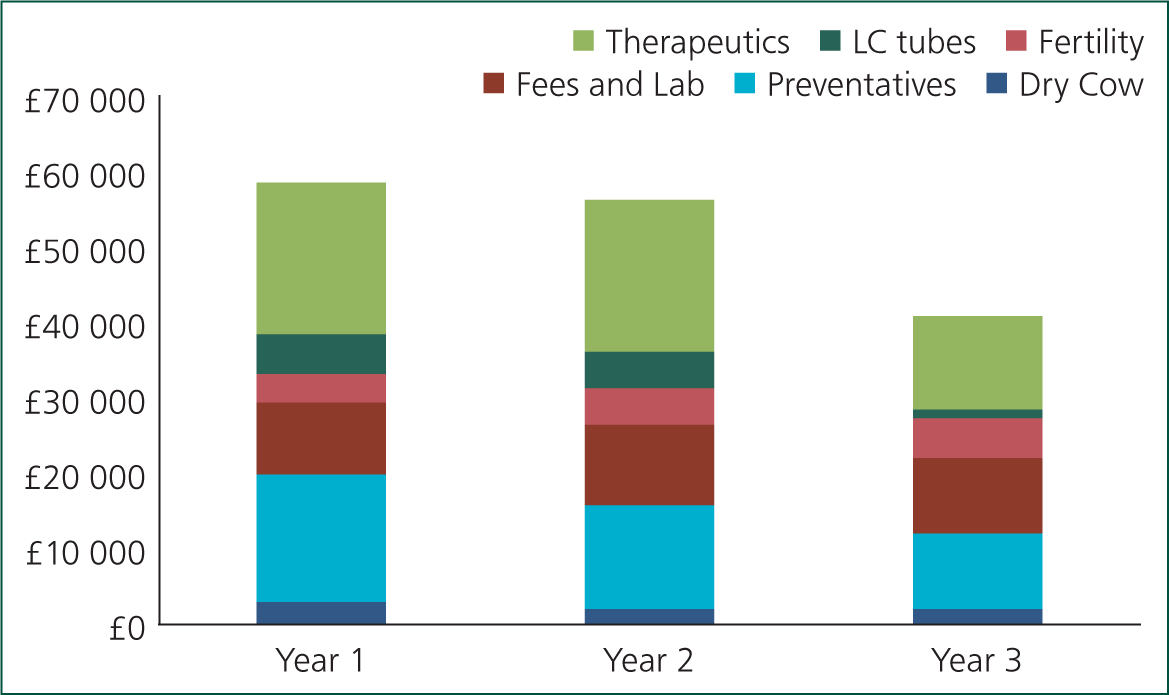
Figure 2 shows veterinary spend on the farm broken down by area per cow and per litre, showing that spend on preventatives and advisory veterinary time exceeds therapeutic (which includes NSAIDs) and mastitis tube spend at 0.55 pence per litre (ppl) and 0.44 ppl respectively.
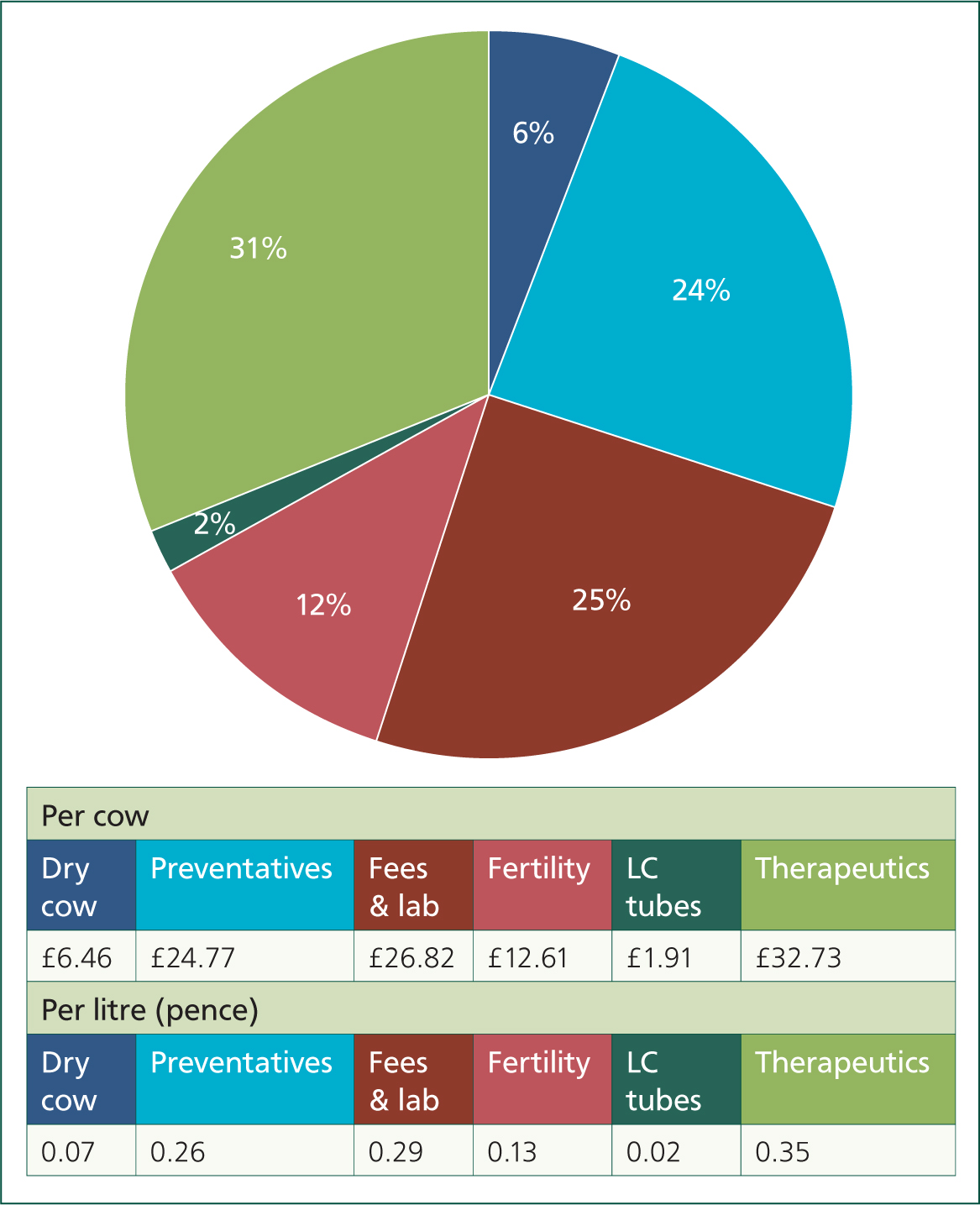
Since 2015 across the UK, there has been a 21% course dose decrease for dry cow products, and a 25% course dose decrease for lactating cow products (Veterinary Medicines Directorate, 2019). In the author's experience these figures reflect a move away from traditional blanket dry cow therapy and an increased uptake in selective dry cow therapy (SDCT) across the industry, with many milk processors requiring their farm suppliers' practice SDCT where appropriate, in consultation with their veterinary surgeon.
It is likely that the reduction in lactating cow tubes, seen across the UK, has been achieved through a combination of factors including more targeted medicine training, with the development of responsible use of medicines courses such as Milk Sure, an increased focus on preventing cases and refinement of treatment protocols with a shift toward following treatments as directed on the label.
The national udder health picture has been improving, with the proportion of herds with chronic cows <10% increasing from 24% in 2010 to 62% in 2019. Data from both Kite Consulting and Kingshay Dairy Consultants, who collect and analyse industry data, also show mastitis incidence in dairy cows (cases/100 cows/year) reducing from 43 in 2013 to 26 in 2020 and 58 in 2013 to 36 in 2020, respectively (Agriculture and Horticulture Development Board (AHDB), 2020a).
Changing attitudes of both veterinary surgeons and farmers
All stakeholders in the UK dairy industry, from farmers and veterinary surgeons to processors, have developed an increasing interest in reducing and refining AMU on farm. Veterinary surgeons have begun to capture and utilise antimicrobial sales and usage data in a way that has not typically been done before, with quarterly reporting and benchmarking across farmer and veterinary groups now common place. The author has found that capturing AMU in this way can be used as an evaluation of overall herd health, with nearly all disease on farm from calf health, mastitis to transition cow disease, well relatable.
The National Milk Laboratories (NML) Farm Assist reporting and benchmarking tool (National Milk Laboratories, n.d.), along with other systems provided by processors and veterinary practices, can be powerful motivators to drive farmers to make changes.
Case study farm 2 — changing attitudes of the whole team
One dairy farm in Cheshire has dramatically reduced AMU with a whole team approach. Increasing pressure from the milk processor coupled with a large re-investment programme in the farm as robotic milking machines and feed kitchen were fitted, drove the 350-cow dairy herd to focus on reducing overall farm antibiotic use. The farm worked with their veterinary surgeon to identify areas where antibiotics were used and plan strategies to reduce their use. The farm's transition management is exceptional, with all cows fresh checked in locking head yokes and any cows needing treatment can be quickly identified. In the last 12 months they have reduced total AMU (mg/PCU) by 57%, spending 21% less on antimicrobials (Figures 3 and 4).
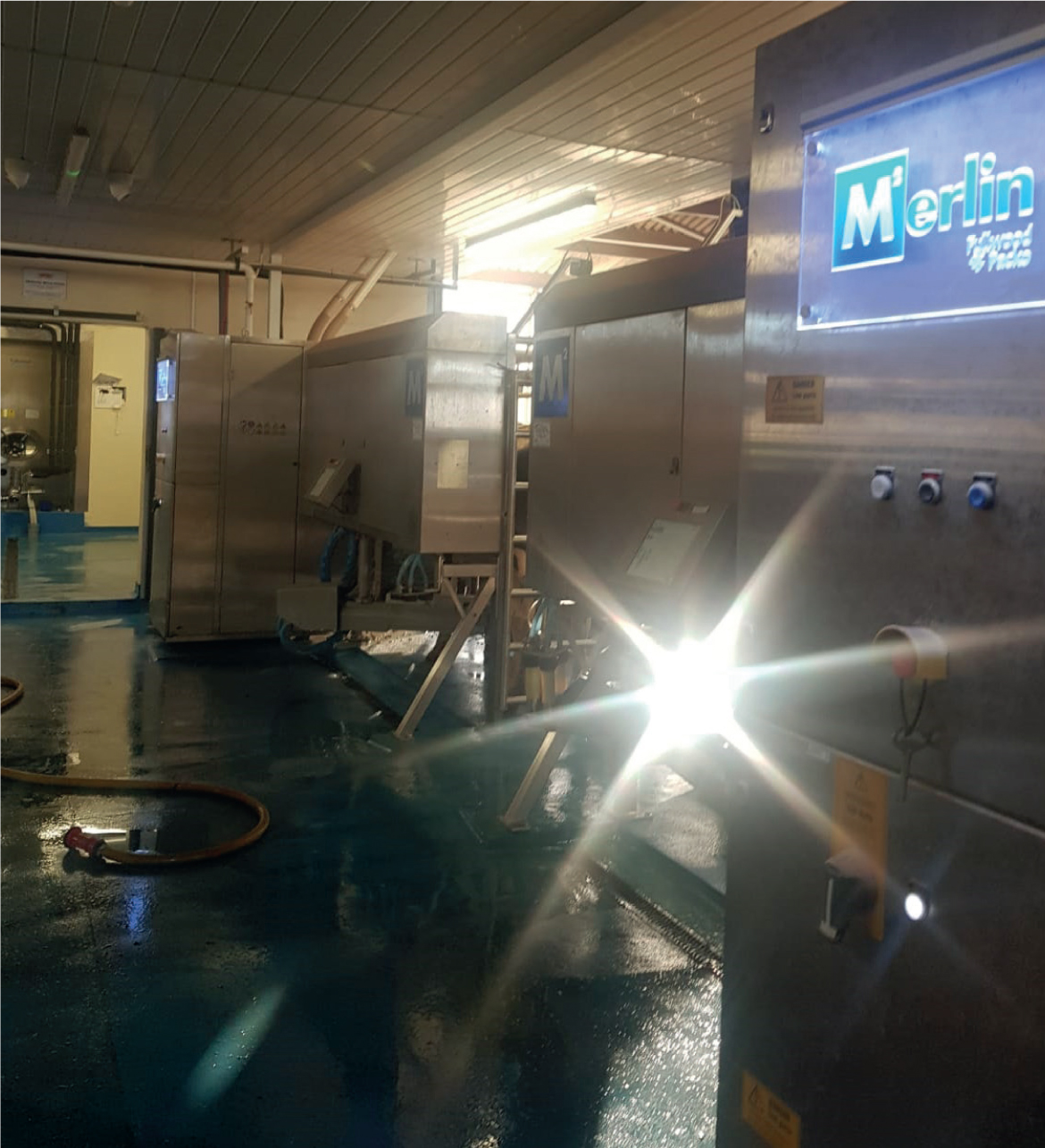
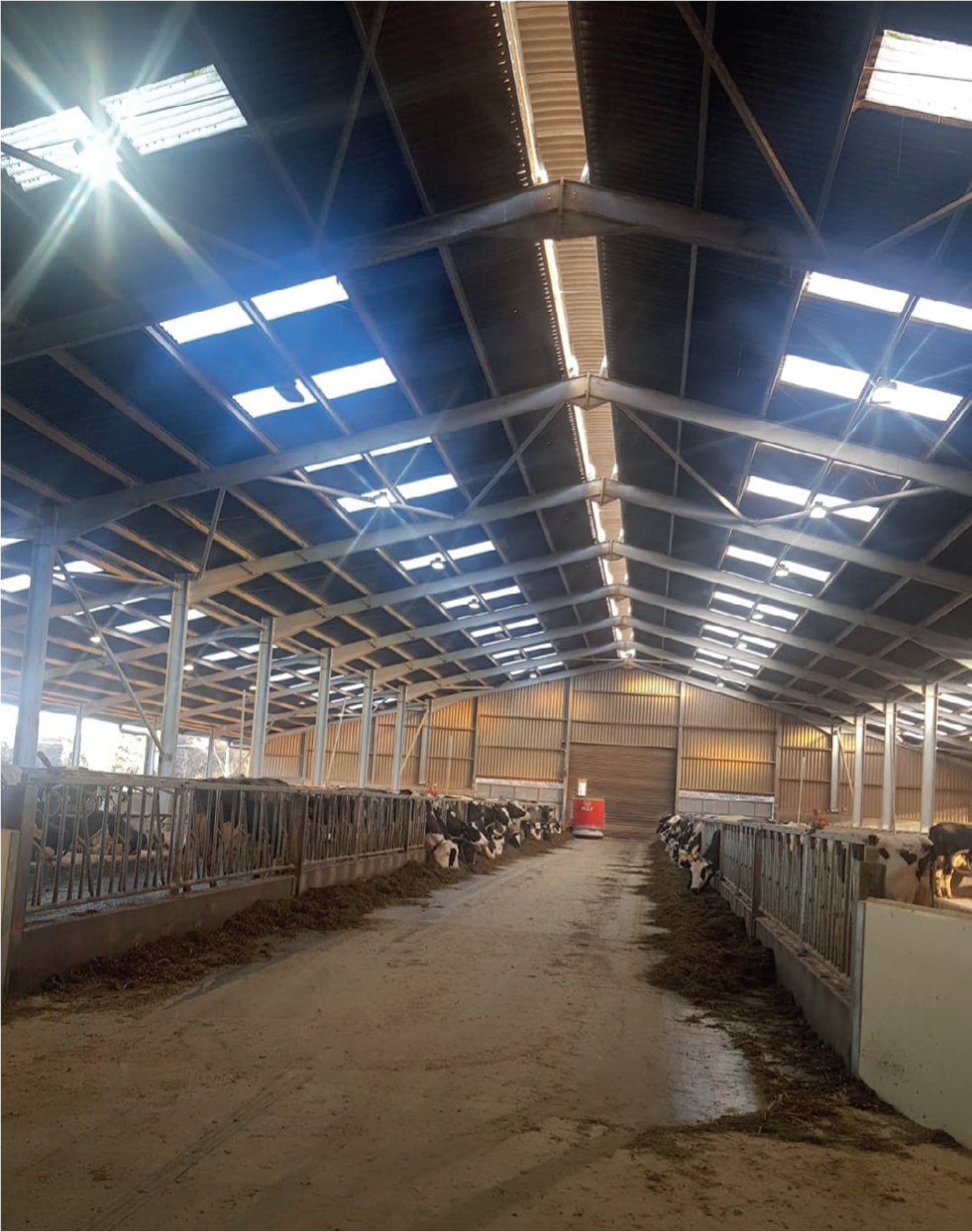
A lot of their success came from altering treatment protocols and mindsets around using antimicrobials on farm, with on label protocols followed, NSAIDs always used for sick animals and appropriate diagnostic testing done, including calf scour testing, nasopharyngeal swabbing in calf pneumonia cases and milk bacteriology when necessary (although on-farm culturing has not been used in this case). A preventive approach became forefront of the whole farm teams' minds, with preventative veterinary spend and veterinary time on farm making up 62% of their total veterinary spend (Figure 5). Within the remaining therapeutic spend, 50% was NSAIDs (Figure 6).
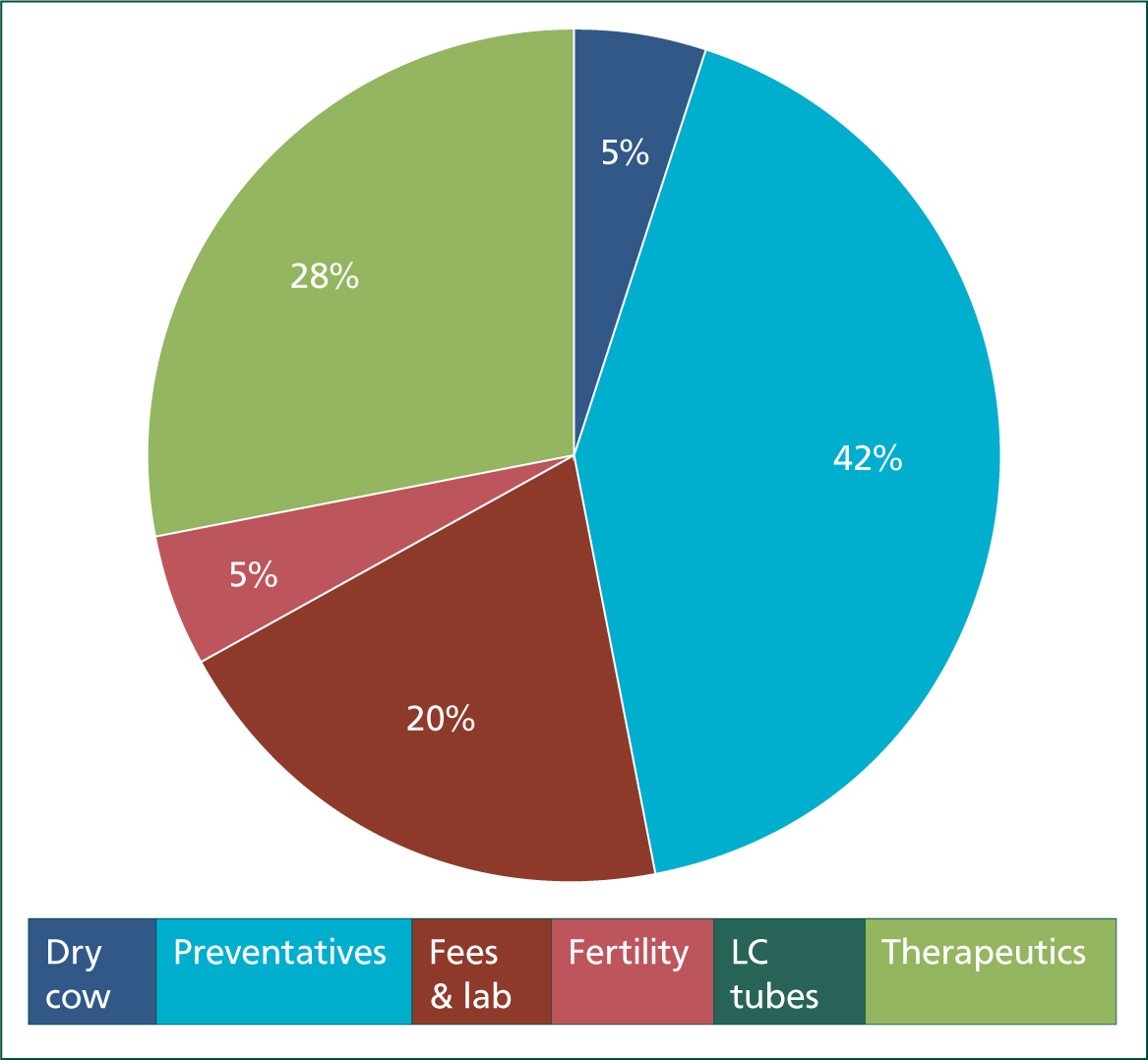
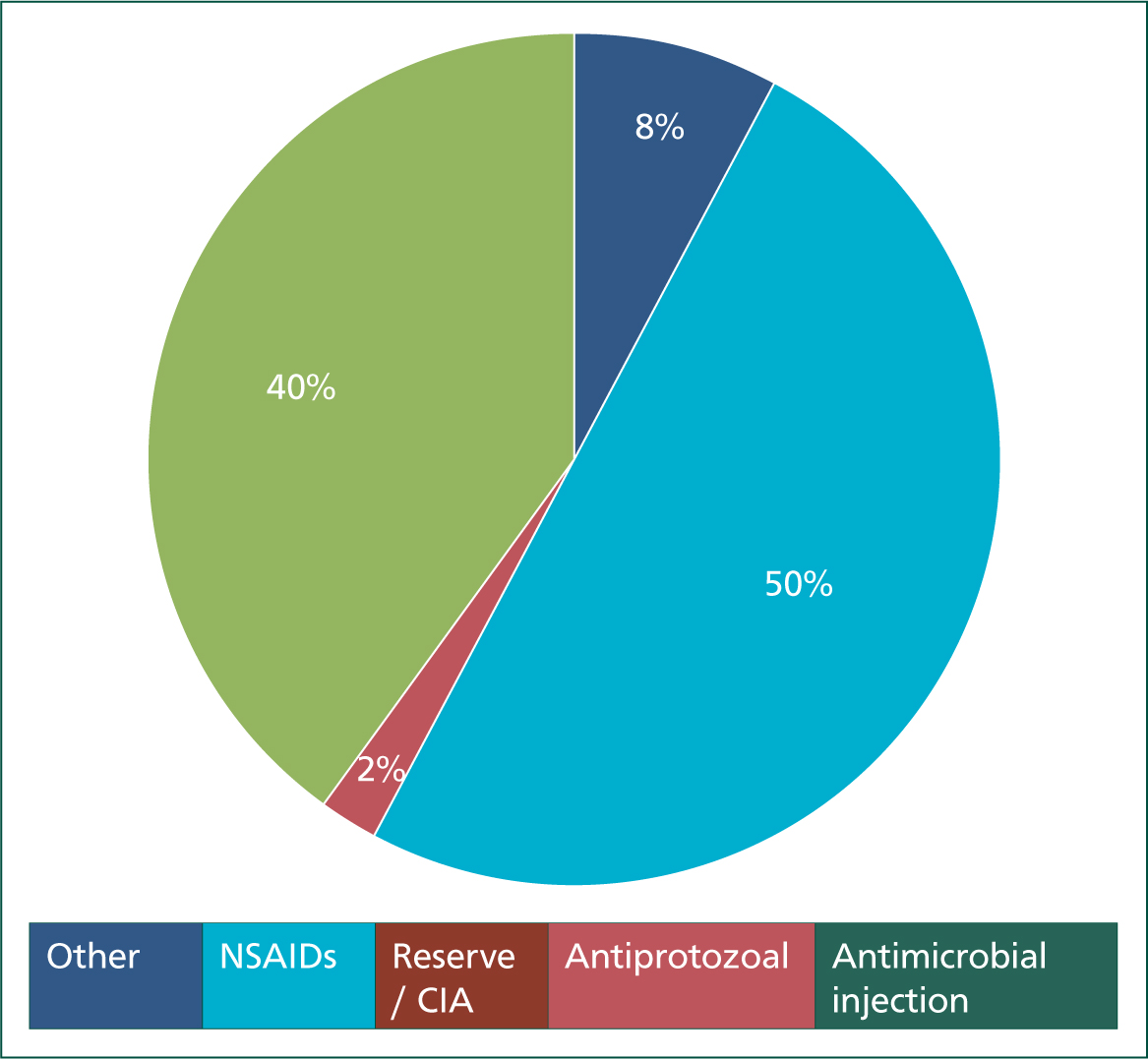
The veterinary practice veterinary spend and antimicrobial report, ‘LLM Farm Vets Vet Invest’, has a unique representation of the antimicrobial usage coupled with the financial data on veterinary investment — it is invaluable for farmers to see exactly what they are spending, where and help guide improvements. The reports are run quarterly or on client request and farmers are bench-marked against others in the practice.
Prevention of disease
For many years now the farm animal veterinary profession has been focused on prevention of disease, with this now making up the bulk of the work in clinical practice. Youngstock have traditionally been overlooked on farm and regarded as an afterthought, although over the past few years a lot has changed with more research and attention given to their management. Youngstock can be responsible for a large proportion of the antibiotics used on farm, which is why one of the Responsible Use of Medicines in Agriculture Alliance (RUMA) targets is to increase respiratory vaccination on farm — with treatments for pneumonia being one of the commonest reasons to treat youngstock.
Data from a 2020 AHDB report on use of vaccines in cattle and sheep, showed that in 2019, 36% of possible animals were vaccinated for pneumonia, which was the same as in 2015 (AHDB, 2020b).
The RUMA targets for 2021–2024 aim for a ‘25% reduction in mean antimicrobial use mg/kg by 2024, against 2020/2021 base-line (once established)’ and ‘7.5 fewer animals treated per 100 calves nationally by 2024, against 2020/2021 baseline (once established)’. Increased preventative medicine and vaccine penetration will be instrumental to achieving the targets described above for reduction in antimicrobial use in youngstock. Youngstock management on dairy farms is critical to get right, to set up a future healthy productive herd, and can be one of the most rewarding areas in which to influence change.
Case study farm 3 — improved calf health
A 200 cow 9000 litres dairy herd in Dorset has achieved great success in reducing their youngstock disease and consequently anti-biotic use across the whole farm. An autumn block calving system with all dairy replacement heifers born within 8 weeks, allows the farm to focus their attention on a successful calf rearing system. Key motivators for change on this farm included a desire to improve health and welfare of calves, with a new farming generation enthusiastic to reduce unnecessary workload and maximise the productivity of the herd. ‘Following an on-farm veterinary review, reduction in calf pneumonia became a top priority for the farm. Together with their veterinary surgeon, the farm reviewed calving and colostrum management, ensuring a minimum of 4 litres was fed to all calves within the first 6 hours of calving, with colostrum and feeding equipment cleaned with hot water and disinfectant between every feed. The calving environment was never overstocked, and calving boxes and calf pens were always well bedded with clean straw to allow excellent nesting scores in the calves. Cow and calf cleanliness were a top priority for the farm. Staff training was focused on why things were done, with staff attending courses run by the farm veterinary surgeon. The calf shed and calving yard were emptied, steam cleaned, disinfected, and allowed to dry between batches of calves. Partitions in the main calf shed were removed so the positive pressure ventilation system (PPVS) was more effective and a respiratory vaccination protocol was implemented.
Over the following 4 years, a 92% reduction in doses of anti-biotic used for calf pneumonia per 100 heifers was seen on the farm (Figure 7), with zero cases of calf scour and average daily liveweight gain of 1.2 kg/day in the latest calving block.
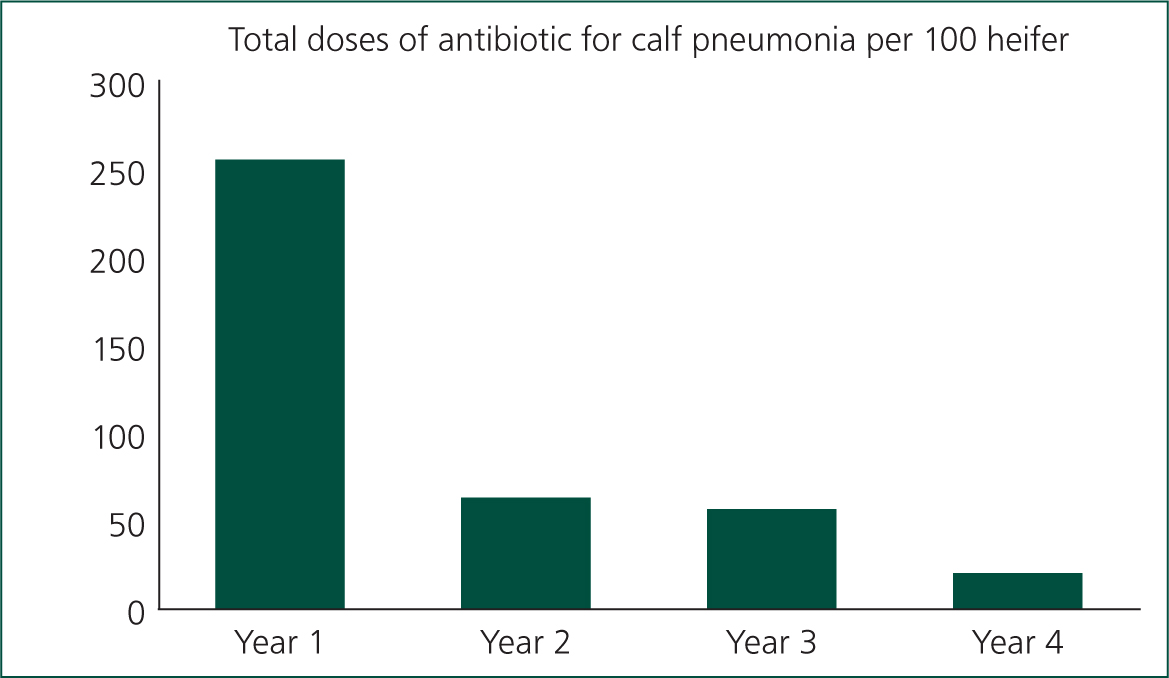
In the same period, the overall farm antibiotic use has fallen from 36 mg/PCU to 12.8 mg/PCU, with youngstock total use at 3.7 mg/PCU, monitored using the NML Farm Assist antibiotic reporting service.
Increasing collaboration across the industry
Veterinary surgeons are an integral member of the farm team and are increasingly collaborating with other advisors and milk processors to help bring about changes on farm. One large cheese producer in the South West has adopted a complete culture change in collaborative work with their farmer suppliers, and their veterinary surgeons over the past 5 years. The processor worked with veterinary surgeons to reinforce the need for greater responsibility on farm in dealing with appropriate use of medicines, and together they put in rigorous controls on farm to ensure residues from medicines do not enter the milk supply.
Through a series of veterinary surgeon led training meetings, improved financial rewards for compliance, and the Milk Sure training of the whole supply pool, the producer has successfully increased engagement on all its farms on responsible AMU. Table 2 shows the average total antimicrobial use for farms in the supply pool, with monitoring before 2019 occurring via the farm's own veterinary surgeons.
Table 2. Barber's supply pool total antibiotic use
| Mg/PCU * | |
|---|---|
| RUMA Baseline 2015 | 26.2 |
| RUMA 2020 Target | 21.0 |
| Barber's 1st Apr 2018/31st Mar 2019 | 15.3 |
| Barber's 1st Apr 2019/31st Mar 2020 | 14.4 |
Conclusions
There are many good examples of how the UK dairy industry has embraced change over the past few years, with farmers and veterinary surgeons challenging ‘traditional’ practices and advancing the health and welfare of their herds through more responsible prescribing. Analysing farm data, benchmarking and utilising case studies from farms that have already successfully made changes to management and treatment protocols, are powerful tools to assist in motivating further change on farm.
Veterinary surgeons are the gatekeepers to responsible prescribing and as the nature of their role on farms continues to evolve, it is more important than ever they are regarded by farmers as trusted advisors, equipping them with the best knowledge and tools to improve herd health and welfare while reducing unnecessary antibiotic use. A proactive approach to reducing antibiotic use on farm results in healthier more profitable herds and a more rewarding role in the farm team as the veterinary surgeon, helping to future proof their business and the industry.
KEY POINTS
- The UK dairy industry has already made significant strides towards responsible antimicrobial usage, with a 20% reduction in total antimicrobial use and virtual total elimination of high priority critical important antimicrobials since 2018.
- It is clear having worked with dairy farmers across the UK, there are still opportunities to refine and reduce antimicrobial use, and the farming and veterinary industries are keen to embrace further change to challenge ‘traditional’ practices.
- Analysing a farm's data to understand how they perform now and benchmarking across their peers is key to motivate change. Antimicrobial data provides an overview of herd health and is a great starting point for herd level discussions and improvements.
- As veterinary surgeons we are uniquely placed to help farms make herd level changes and reduce unnecessary antimicrobial use, as a profession we should seize the opportunity to help our clients' businesses become more profitable and sustainable for the future.


